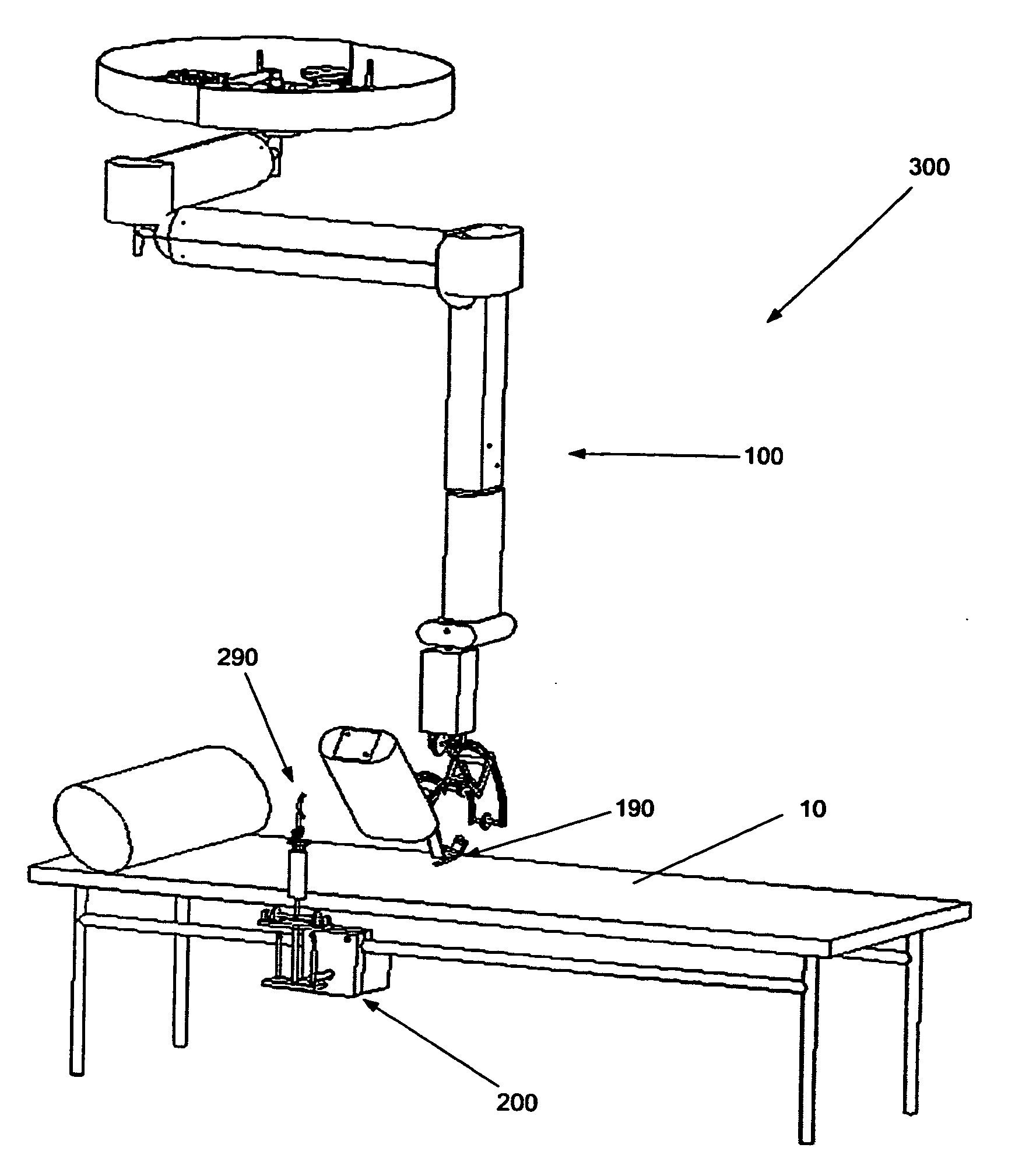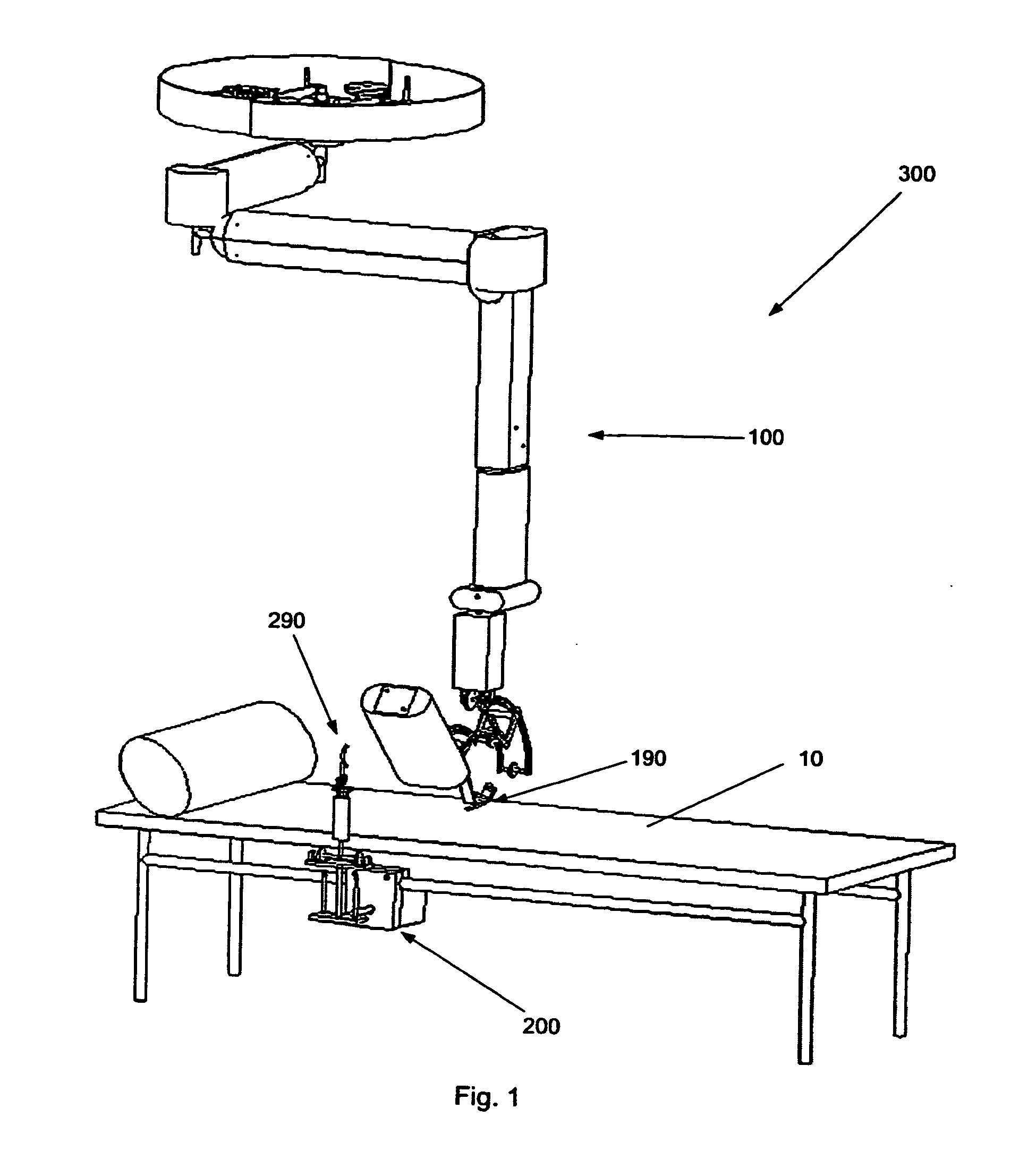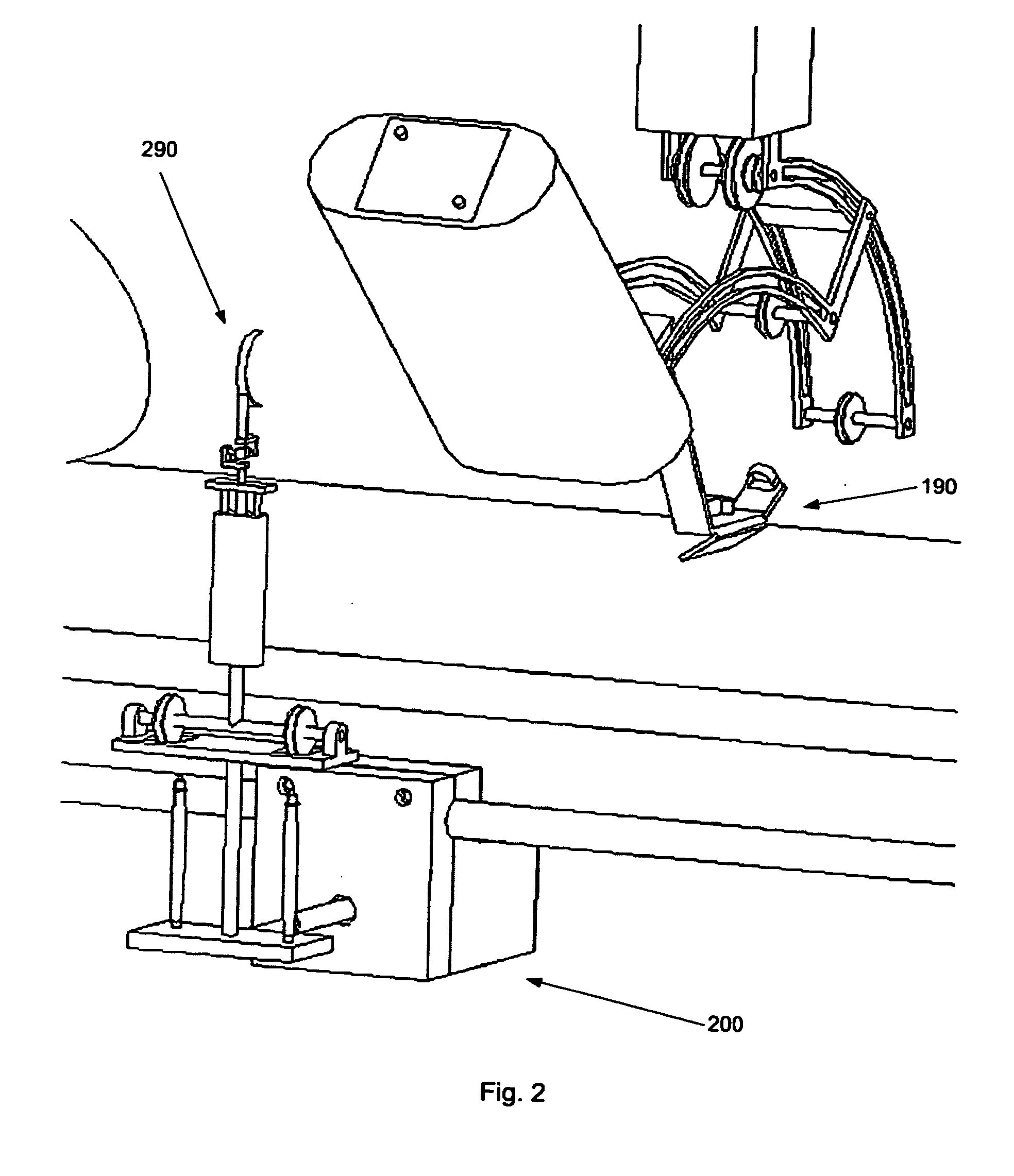Robotic Arm for Controlling the Movement of Human Arm
a robot arm and human arm technology, applied in the field of robot arms for controlling the movement of human arms, can solve the problems of not being able to give each patient the care of their own hand, and not describing the means of positioning the user's hand,
- Summary
- Abstract
- Description
- Claims
- Application Information
AI Technical Summary
Benefits of technology
Problems solved by technology
Method used
Image
Examples
Embodiment Construction
[0008]The present invention aims at providing improvements in at least some of these areas. This aim is achieved with a robotic arm according to claim 1.
[0009]In a first aspect, the invention provides a robotic arm for controlling a movement of a user's hand, said robotic arm forming a kinematic chain extending from a proximal to a distal end and comprising a grip for positioning said user's hand at a distal end, characterised in that the kinematic chain possesses redundancy in a distal region, such that the movement of the user's hand can be decoupled from other parts of the kinematic chain.
[0010]A patient places his or her hand in the grip provided at the distal end. In this region, redundancy in the kinematic chain is provided, which means that the whole kinematic chain except for the hand grip might perform movements while the hand grip (and thus the patient's hand) does not move. This presents a major improvement in comfort and safety for patients and attending physicians. If a...
PUM
 Login to View More
Login to View More Abstract
Description
Claims
Application Information
 Login to View More
Login to View More - R&D
- Intellectual Property
- Life Sciences
- Materials
- Tech Scout
- Unparalleled Data Quality
- Higher Quality Content
- 60% Fewer Hallucinations
Browse by: Latest US Patents, China's latest patents, Technical Efficacy Thesaurus, Application Domain, Technology Topic, Popular Technical Reports.
© 2025 PatSnap. All rights reserved.Legal|Privacy policy|Modern Slavery Act Transparency Statement|Sitemap|About US| Contact US: help@patsnap.com



